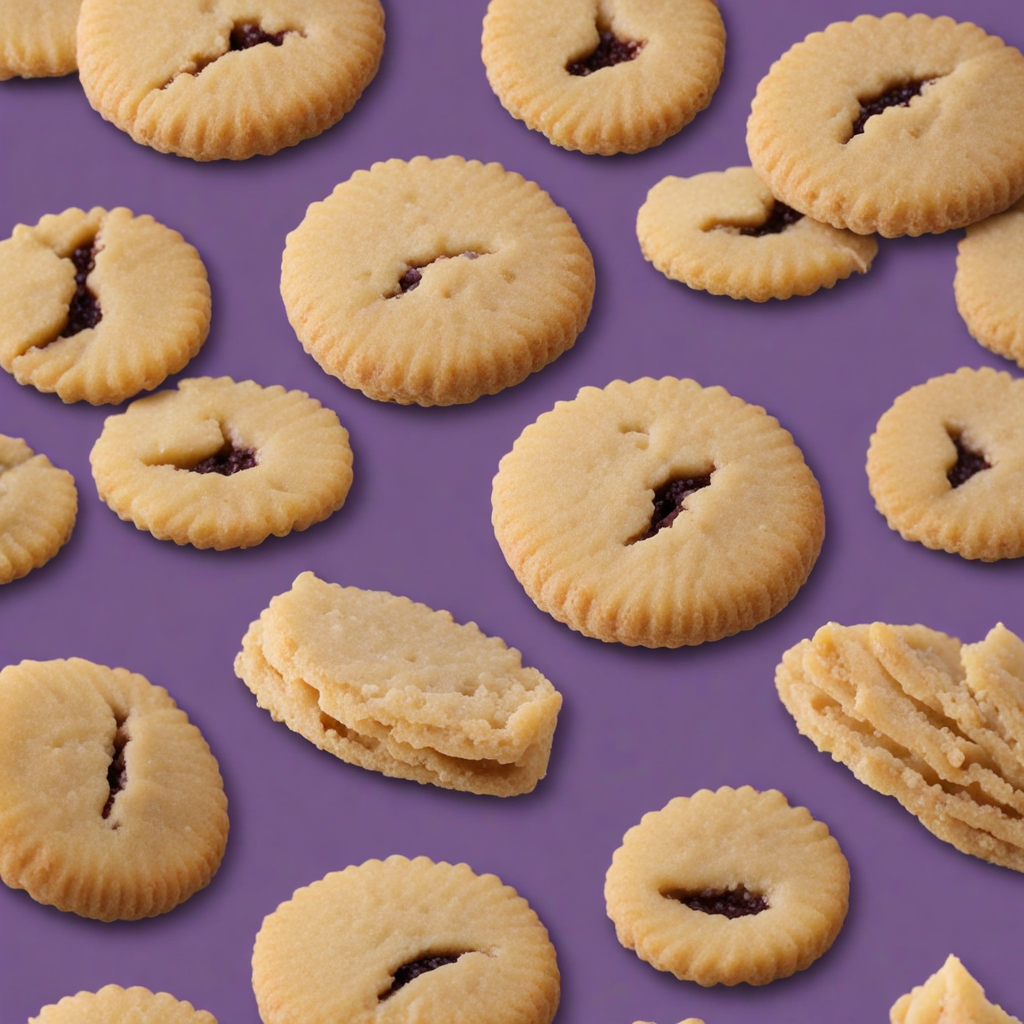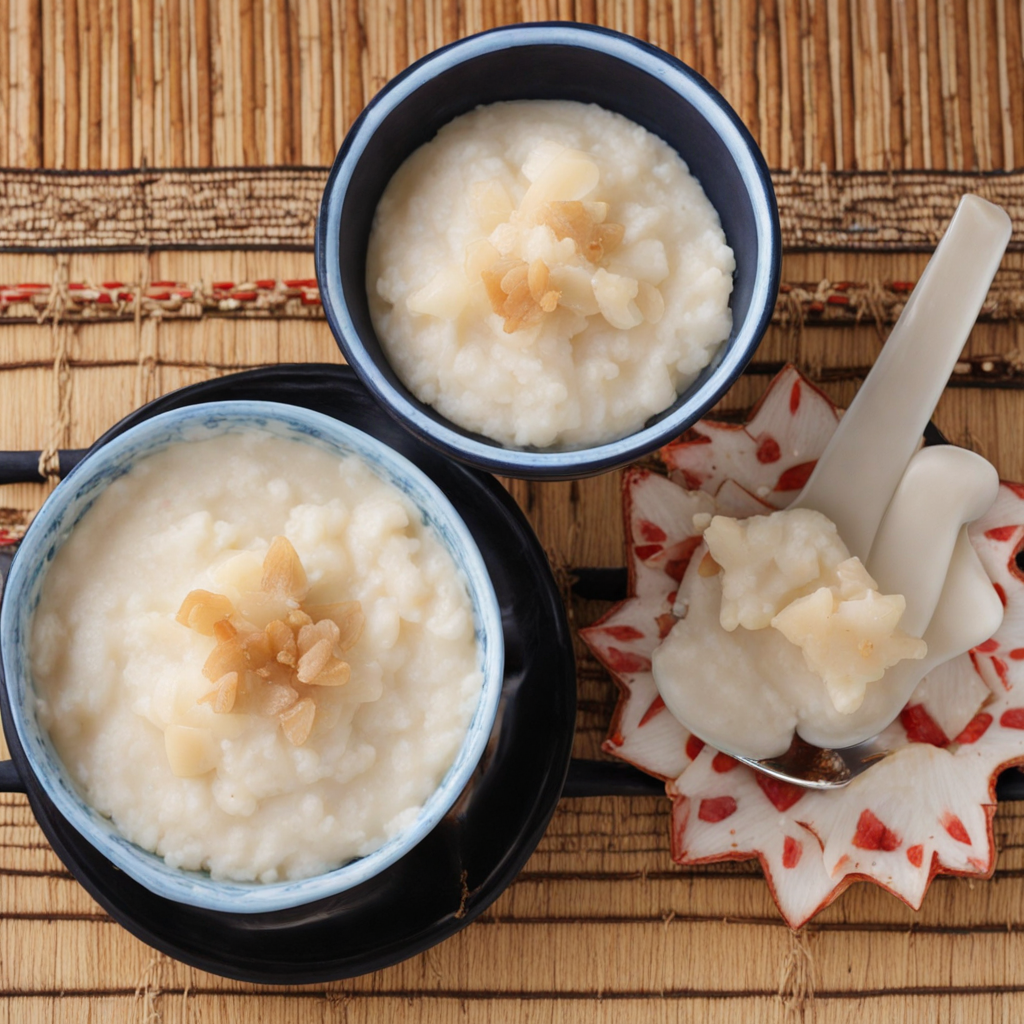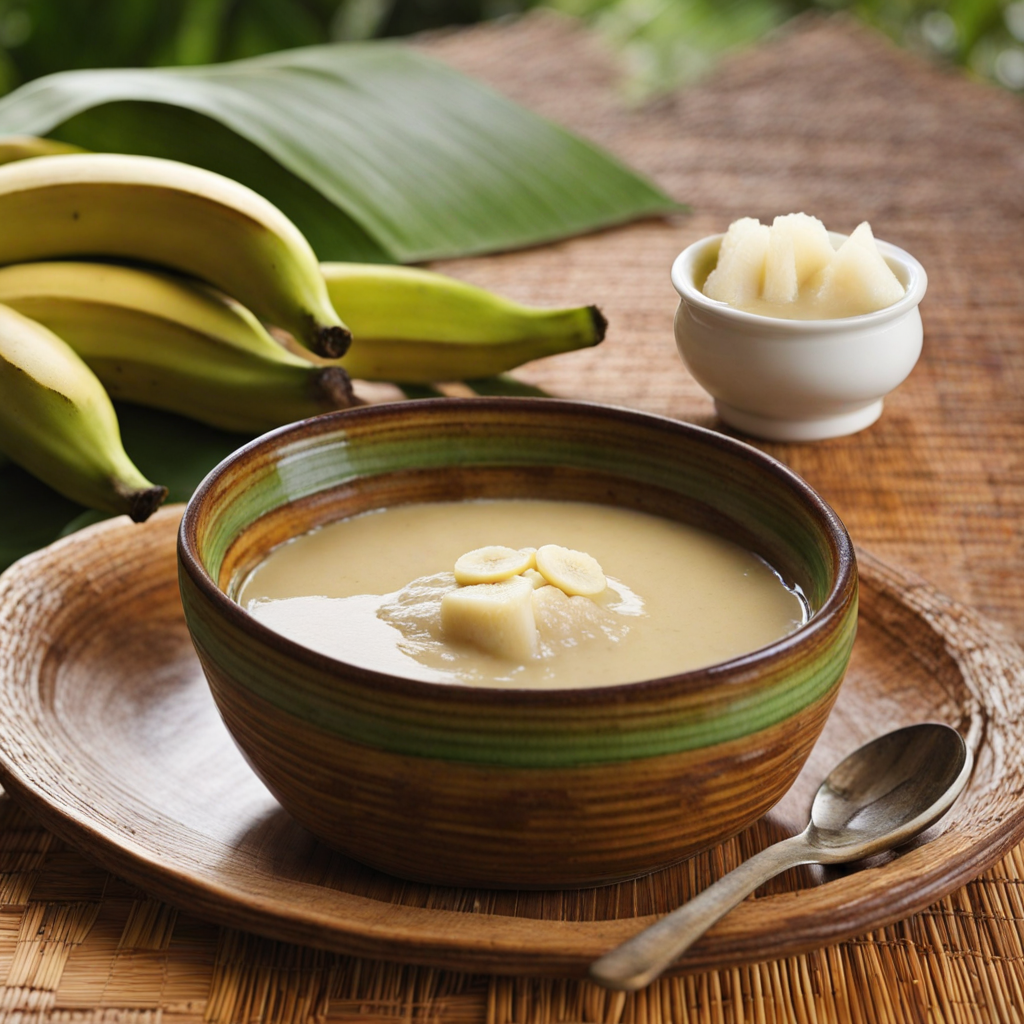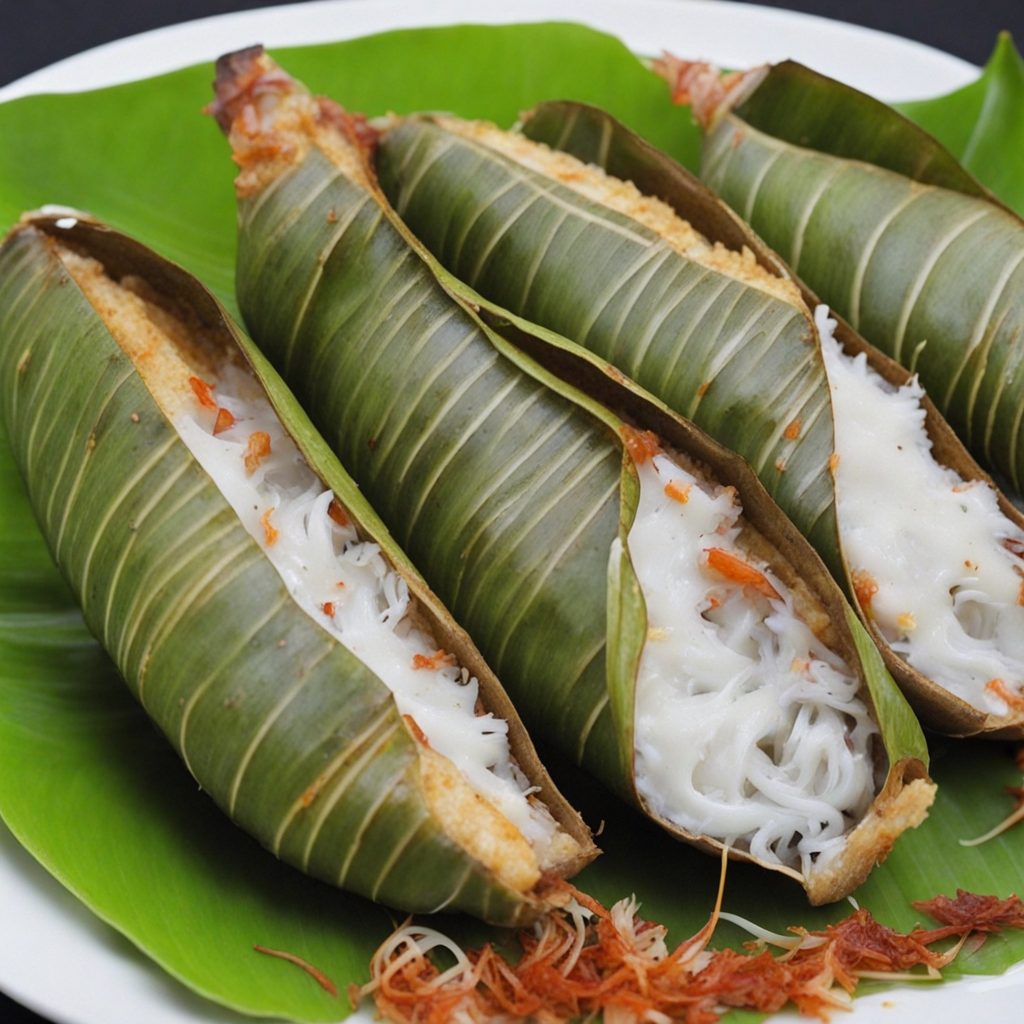Masi Samoa
Masi Samoa is a delightful traditional Samoan treat that embodies the essence of the islands' culinary heritage. This sweet delicacy consists of a combination of coconut cream and ripe bananas, which are wrapped in a soft, sticky layer of taro leaves. The dish is often steamed, allowing the flavors to meld beautifully while retaining the natural sweetness of the ingredients. Each bite offers a rich, creamy texture that is both comforting and satisfying, with the natural sweetness of the bananas perfectly complemented by the subtle nuttiness of the coconut cream. In addition to its creamy filling, Masi Samoa is often flavored with a hint of vanilla or a sprinkle of sugar, enhancing its sweetness without overpowering the natural flavors. The taro leaves not only serve as a wrapping but also impart a gentle earthiness to the dish, creating a balance in taste and aroma. This combination makes Masi Samoa a versatile treat that can be enjoyed as a dessert or as a snack at any time of the day. What makes Masi Samoa truly special is its cultural significance in Samoan society. Often prepared for special occasions, family gatherings, and celebrations, this dish brings people together and is a symbol of hospitality. As you savor the rich flavors of Masi Samoa, you will not only experience the unique taste of Samoa but also the warmth and tradition that accompany this beloved dish. It's a culinary experience that transports you to the heart of the Pacific Islands, making it a must-try for any food lover seeking to explore new and exciting flavors.
How It Became This Dish
Masi Samoa: A Culinary Gem of Samoan Culture Masi Samoa, often simply referred to as 'Masi', is a traditional Samoan delicacy that encapsulates the rich cultural heritage and communal spirit of the Samoan people. This dish, consisting of a soft, steamed coconut cream-filled cake made from taro or cassava, is not merely a culinary treat; it is a symbol of community, tradition, and identity deeply embedded in the fabric of Samoan life. Origins of Masi Samoa The origins of Masi Samoa can be traced back to the Polynesian settlement of Samoa, which is believed to have occurred around 1000 BCE. The early Samoans were skilled agriculturalists who cultivated a variety of crops, including taro, yam, and cassava, which became staples of their diet. The use of coconut, an integral component in many Polynesian cuisines, also played a significant role in the development of Masi. The name 'Masi' comes from the word ‘masi,’ meaning ‘to be soft’ or ‘softness,’ which describes the texture of the cake. Traditionally, Masi was made using taro, a root vegetable that is native to Southeast Asia and was introduced to the islands by early Polynesian navigators. Over time, as cassava was introduced to the islands, it became a popular alternative due to its availability and versatility. Cultural Significance Masi Samoa is more than just food; it is an expression of Samoan identity and hospitality. It is often prepared for special occasions, including birthdays, weddings, and cultural celebrations, acting as a centerpiece in communal feasting. The preparation and consumption of Masi are imbued with social meaning, signifying unity and togetherness among families and communities. In traditional Samoan culture, food plays a crucial role in social gatherings. The preparation of Masi involves the participation of family members, especially women, who gather to create the dish, reinforcing bonds and passing down culinary skills through generations. The act of cooking Masi becomes an occasion for storytelling, sharing, and the reaffirmation of cultural practices. The dish also embodies the Samoan concept of 'fa'a Samoa', which translates to 'the Samoan way'. This encompasses not only the values of hospitality and communal sharing but also the respect for the land and the resources it provides. Masi, made with locally sourced ingredients, reflects the sustainable practices that have characterized Samoan food culture for centuries. Development Over Time The evolution of Masi Samoa over the years demonstrates the dynamic nature of Samoan cuisine, influenced by historical events and interactions with other cultures. The arrival of European explorers, missionaries, and traders in the 18th and 19th centuries introduced new ingredients and cooking techniques. Sugar, for example, became a popular addition to Masi, enhancing its sweetness and making it more appealing to a broader palate. In contemporary times, while traditional recipes remain cherished, there has been a creative resurgence in how Masi is prepared and presented. Modern interpretations may include variations such as Masi with chocolate or fruit fillings, showcasing the adaptability of Samoan culinary traditions. Many Samoan families now incorporate modern conveniences, such as electric steamers, while still honoring the traditional methods of preparation. The globalization of Samoan cuisine has also led to an increased appreciation for Masi beyond the shores of Samoa. Samoan diaspora communities around the world have introduced Masi to new audiences, creating a bridge between traditional practices and contemporary culinary trends. Festivals celebrating Pacific Islander culture often feature Masi, allowing for cultural exchange and the promotion of Samoan food heritage. Masi in the Modern Era In the modern era, Masi Samoa continues to hold a special place in the hearts and homes of Samoans. As globalization and modernization influence culinary practices, many Samoan chefs and home cooks are dedicated to preserving traditional recipes while also experimenting with new flavors and techniques. This synthesis of old and new reflects the resilience and adaptability of Samoan culture. Social media has played a crucial role in the resurgence of interest in Masi and other traditional foods. Platforms like Instagram and TikTok have provided a space for food enthusiasts to share their culinary creations, fostering a sense of community among those who are passionate about preserving and promoting Samoan cuisine. Recipes for Masi have proliferated online, each iteration telling a story of personal and cultural significance. Moreover, the recognition of indigenous foods and their importance in cultural identity has led to a greater appreciation of Masi as a symbol of heritage. Organizations focused on food sovereignty and cultural preservation advocate for the use of traditional ingredients and methods, ensuring that dishes like Masi continue to be cherished and celebrated. Conclusion Masi Samoa is more than just a delicious treat; it is a testament to the enduring spirit of the Samoan people and their connection to land, family, and culture. From its humble origins rooted in the agricultural practices of early Polynesians to its modern adaptations, Masi remains a beloved dish that encapsulates the essence of Samoan hospitality and communal identity. As the world continues to evolve, Masi Samoa stands as a culinary symbol of resilience, reminding us of the importance of preserving cultural heritage while embracing innovation. Whether enjoyed during a festive gathering, a family meal, or celebrated at cultural festivals, Masi embodies the warmth and unity that characterize Samoan life—a delicious slice of history served on a plate.
You may like
Discover local flavors from Samoa







